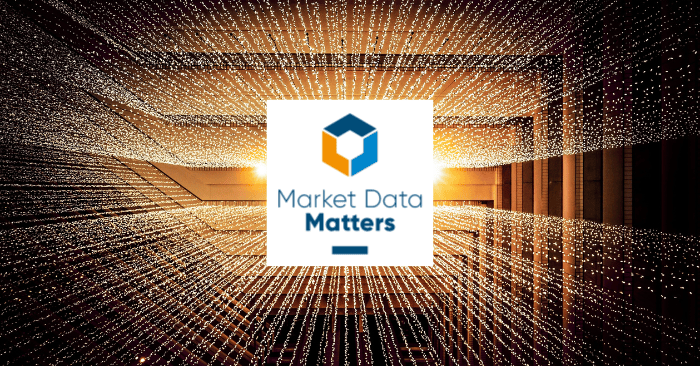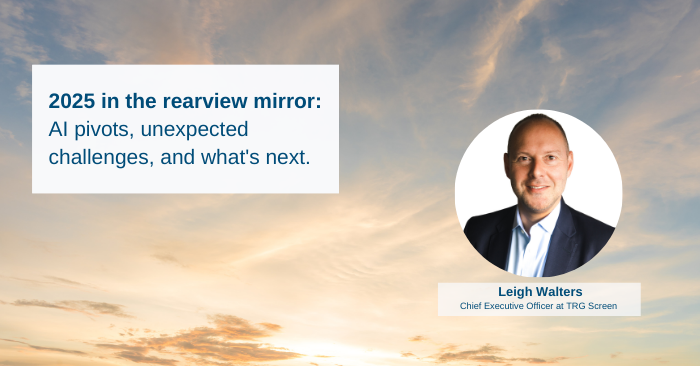This is the 5th edition of our industry newsletter with musings, observations and ideas regarding the challenges and opportunities facing market data management leaders.
Making AI work for you: Getting real value from gen AI (not just hype)
This isn’t about hype or headline-chasing. It’s about practical lessons brought to you by members of our team who’ve been hands-on, heads-down and slightly caffeinated as we roll out AI across our own business and into our products.
Let’s start with the obvious: AI is everywhere. It’s in your inbox, your boardroom, maybe even your toaster. Let’s face it – it’s talked about in virtually every meeting. Everyone’s experimenting with it.
But while interest is high, results vary.

For all the buzz, there’s still a big question:
The biggest mistake we see? Believing an AI model itself is the differentiator. It’s not. The real value comes from how you use it. The problems you apply it to, the quality of your data and how well your people can actually work with it.
Here’s what we’ve learned from building and embedding AI across our business and products.
1. Start with a real use case. Not a vague idea.
Gen AI works best when it’s solving a specific, high-impact problem. “Let’s do something with AI” isn’t a strategy. But “Let’s use AI to summarize 4,000 legal contracts and surface renewal dates in seconds” is a clear business case with a measurable outcome.Building an AI agent works best for:
- Sifting through large, complex datasets to answer specific questions.
- Automating complex, repeatable, knowledge-heavy tasks.
- Turning unstructured data chaos into actionable insights your team can act on.
2. Data quality makes or breaks AI.
AI will quickly become commoditized. The real differentiator is the expertise, logic and data behind it. Bad data = bad outputs.
Forget big data. Think better data:
- Specialized, curated, structured and relevant to the task at hand.
- Accessible and machine-readable.
- Reviewed and continuously trained on the right outputs by data stewards.
We saw this firsthand: one of our most useful AI agents runs on just 200KB of curated text. Not gigabytes or terabytes. Just carefully selected, domain-specific information. And as we’re updating some of our own product messaging, we’re retraining the agent as we go and will continue to do so.
3. Put AI where people already work.
An AI agent that sits on the sidelines won’t drive value. It needs to be embedded into existing workflows where people already work.
Make it part of the routine:
- Don’t ask people to log in to yet another tool. Meet them where they are.
- Remove friction; focus on accessibility and usability from the start.
- Quick wins to drive adoption, early success builds confidence and usage
Our internal AI assistants live in Slack – where our teams already work – and that’s made all the difference. Why? Because that’s where our people already are. Result? Instant adoption.
4. Prompting is a skill. Train for it.
Gen AI can be powerful – but only if you know how to ask. Think of AI as a genius who needs instructions like a five-year-old child. The better your prompt, the better the result. Conversely, vague questions get vague answers. What works:
- Be specific: “Summarize the usage restrictions in Section 3” beats “What’s in this contract?”
- Add context: who, what, why. AI needs framing to understand the request
- Iterate: the first answer is rarely the best.
5. Nail one use case. Then expand.
The temptation to “AI everything” is real. But don’t try to do everything at once. Find a clear, meaningful use case, show the impact and let success build momentum.
What worked for us:
- Solving one problem first. (For us that meant focusing on one of the most time-consuming processes market data teams face: invoice processing.)
- Sharing that success widely - success breeds curiosity and demand. Crowdsource, don’t guess and don’t deploy or build AI tools in a vacuum.
- Talk to your teams and your clients and let their input suggest the next application or AI-driven feature.
Success stories spark new ideas across the business. One team’s tool becomes another team’s inspiration.
6. Build with reuse in mind.
A well-architected AI solution shouldn’t be a one-hit wonder. Your AI framework can support multiple use cases across the business. What might have started with sales can power teams like legal, marketing, and soon, other areas too. You get the idea.
Think beyond the first task:
- Focus on creating foundations that scale.
- Avoid one-off projects with limited shelf life or extensibility.
- Think ‘platform’ not ‘project,’ and you will see how it expands your thinking.
7. Don’t forget the guardrails.
Speed is great. Compliance is better. AI governance isn’t the boring bit – it’s the bit that keeps you out of trouble. You need clear policies on data use, access, updating and compliance before rolling anything out.
Have answers to:
- Who can access the tools?
- What data is used and stored?
- Are you aligned with emerging regulations (like EU AI Act)?
Final thought: AI’s not magic. Execution is.
Gen AI isn’t a shortcut to transformation. But with the right use case, good data, seamless user access and strong oversight, it can unlock major efficiencies.
The firms, and people, that get AI right now will get results in the long run. The ones chasing novelty won’t.
Thinking about AI in your business? What’s your biggest challenge? Tell us more in the comments.
Want to learn more about how we’re approaching AI in our ways of working and product development? Check out our stance on AI here.
The best strategy for reducing market data costs: better procurement or tighter usage control?
It’s a familiar debate and it usually boils down to two big questions:
Is aggressive procurement your best defense?
In this camp, every contract is an opportunity to negotiate better pricing or more rights. After all, if it doesn’t pass the procurement gatekeeper, it doesn’t happen. Simple? Not quite. This only works if your procurement team has real insight into the business, the data to support their case and the savvy to know exactly where the leverage lies. Without that, it’s a blunt instrument.
OR, is tighter usage and licensing control the smarter play?
.png?width=700&height=360&name=June%20Newsletter%20%20(1).png)
This approach tackles the root causes of spiraling costs and shifts the focus from reactive clean-up to proactive control. It means knowing exactly how market data is actually used – by desk, by user – and cutting anything that doesn’t deliver value. It also means educating the business on license terms and usage limits to prevent accidental breaches and duplicate spend.
So, which delivers better ROI?
Market data procurement teams bring a lot to the table. They know the industry. They’ve built relationships that take years to earn. They’ve sharpened their negotiation skills over countless rounds of friendly (and not-so-friendly) sparring with vendors. They also know how to navigate the far trickier challenge of internal cost allocations for multi-asset-class deals.
But not everything is negotiable. Some market data is business critical. It’s incredibly expensive. And it comes from a shrinking pool of providers. That means the usual procurement playbook doesn’t always work. You can’t bluff or bargain your way to savings when there’s no real leverage. Even the best negotiators hit a wall when demand is high and supply is tight.
That’s where usage control comes in.
It offers huge potential. But to make it work, you need the right tools just to see what’s happening. Who is using what? Are licenses being underused? Where are you pushing license boundaries? Then there’s the human layer: People to monitor it. Authority to act on it. If those people aren’t backed by leadership, they’re just another cost center – and often seen as more blocker than enabler.
No single right answer, but a better way forward.
The truth? Both approaches have their place. Smart procurement teams understand business use cases, and know when to push or when to pivot. Smart usage control catches waste before it spirals and keeps you compliant.
Together, they unlock real value. Fewer duplications. Lower risk. Stronger vendor management. Tighter cost control. But that only works if they’re aligned – in synch, not siloed, not in turf wars and definitely not competing for control.
The right balance will look different for every organization, and often reflects how mature their approach to managing market data really is. But each side needs to understand what the other brings and the pressures they face. That’s when everyone wins.
How balanced is your approach?
Is there room to strengthen your procurement strategy? Or to modernize your usage oversight?
We’d love to hear how you're tackling this; what’s worked, what hasn’t… and what’s next?




